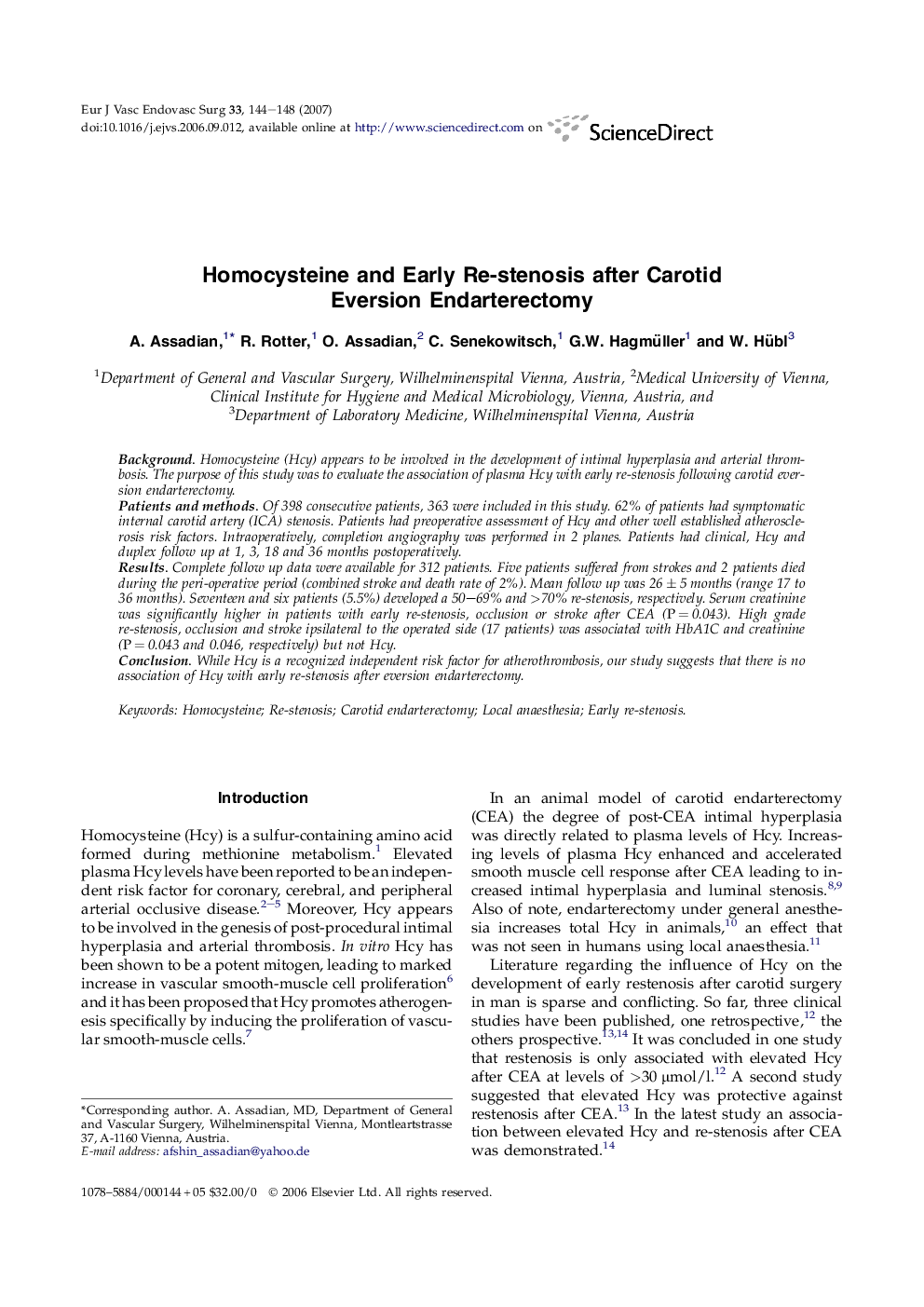| Article ID | Journal | Published Year | Pages | File Type |
|---|---|---|---|---|
| 2914489 | European Journal of Vascular and Endovascular Surgery | 2007 | 5 Pages |
BackgroundHomocysteine (Hcy) appears to be involved in the development of intimal hyperplasia and arterial thrombosis. The purpose of this study was to evaluate the association of plasma Hcy with early re-stenosis following carotid eversion endarterectomy.Patients and methodsOf 398 consecutive patients, 363 were included in this study. 62% of patients had symptomatic internal carotid artery (ICA) stenosis. Patients had preoperative assessment of Hcy and other well established atherosclerosis risk factors. Intraoperatively, completion angiography was performed in 2 planes. Patients had clinical, Hcy and duplex follow up at 1, 3, 18 and 36 months postoperatively.ResultsComplete follow up data were available for 312 patients. Five patients suffered from strokes and 2 patients died during the peri-operative period (combined stroke and death rate of 2%). Mean follow up was 26 ± 5 months (range 17 to 36 months). Seventeen and six patients (5.5%) developed a 50–69% and >70% re-stenosis, respectively. Serum creatinine was significantly higher in patients with early re-stenosis, occlusion or stroke after CEA (P = 0.043). High grade re-stenosis, occlusion and stroke ipsilateral to the operated side (17 patients) was associated with HbA1C and creatinine (P = 0.043 and 0.046, respectively) but not Hcy.ConclusionWhile Hcy is a recognized independent risk factor for atherothrombosis, our study suggests that there is no association of Hcy with early re-stenosis after eversion endarterectomy.
